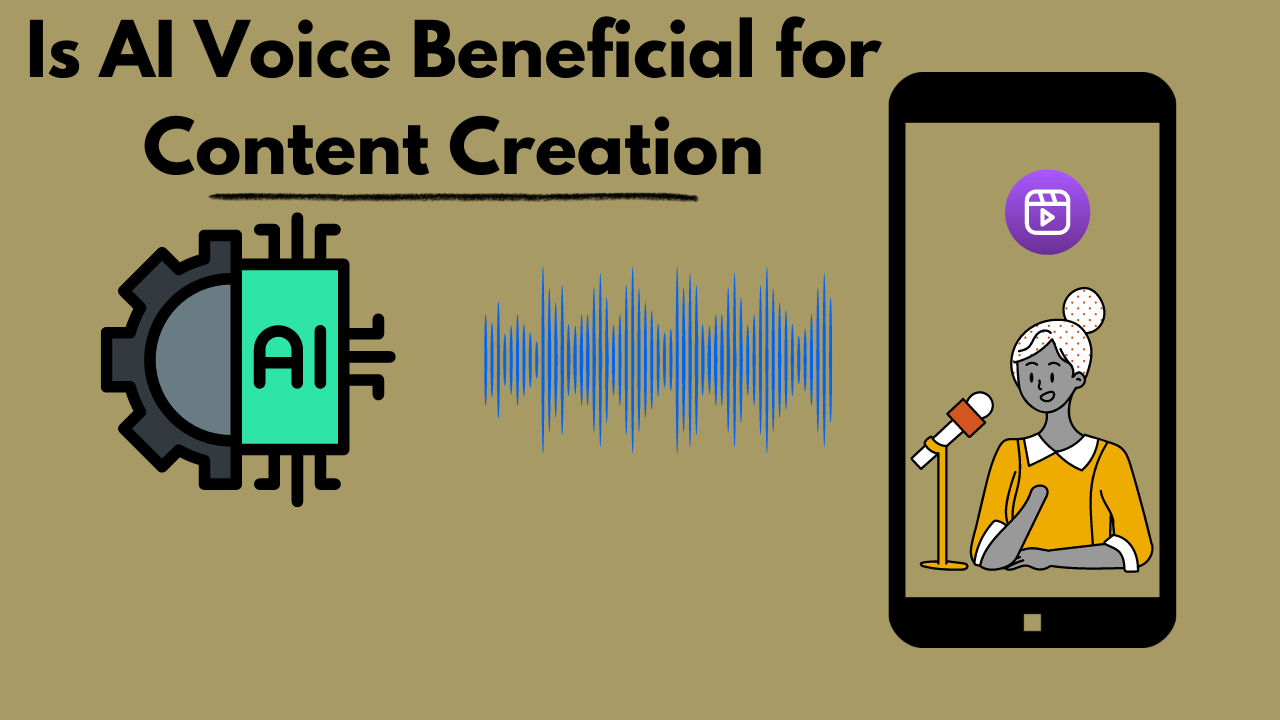In today’s digital landscape, artificial intelligence (AI) (AI voices) is transforming every aspect of content creation. From video production to copywriting, AI is revolutionizing the way content is made and distributed. One such game-changer is AI voice technology, which is becoming increasingly popular for narrating videos, podcasts, and even customer service interactions. But is it really beneficial to use AI-generated voices in content creation?
In this blog, we’ll dive into the pros and cons of using AI (voice) for content, its practical applications, and how it can affect the future of digital media.
What is AI (Voice)?
AI voice refers to artificially generated speech that sounds remarkably human. Using sophisticated machine learning models, tools like Google’s WaveNet and Amazon Polly can convert text into natural-sounding speech. These tools allow content creators to generate voiceovers for videos, podcasts, e-learning modules, and more, without the need for human voice actors.
Here are some popular AI voice tools:
- Google Cloud Text-to-Speech
- Amazon Polly
- Descript Overdub
- Speechelo

The Benefits of Using AI (Voice) in Content Creation
1. Cost-Effective
Hiring professional voice actors or recording your voice can be costly, especially for smaller projects or startups. AI voice tools offer an affordable alternative. By automating voice generation, you can reduce production costs without sacrificing quality.
2. Time-Saving
Recording, editing, and re-recording voiceovers can be time-consuming. AI (voice) tools allow you to generate and modify audio quickly, enabling you to focus on other aspects of content creation. You can tweak tone, speed, and pitch with just a few clicks!
3. Multi-Language Support
Need your content in multiple languages? AI voice platforms can automatically translate and narrate content in various languages. This feature is perfect for global brands looking to reach a wider audience without needing multiple human narrators.
4. Customizable Voices
AI voice platforms give you a wide range of voices to choose from. Want a formal tone for your e-learning module? Or a casual, friendly voice for your explainer video? You can easily select and customize voices to match the tone of your content.
Enhancing Accessibility with AI (Voice)
AI voice isn’t just about cost and efficiency—it also helps make your content more accessible. By providing an audio version of your content, you can reach:
- Visually impaired users who rely on spoken content.
- People with literacy difficulties who prefer listening over reading.
- Audiences on the go, as podcasts and audiobooks become more prevalent.
By enhancing accessibility, AI voice can boost your engagement rates and help build a more inclusive content strategy.
Downsides of Using AI
Despite the benefits, there are some drawbacks to using AI-generated voices in your content creation. Let’s take a closer look at these.
1. Lack of Emotional Depth
While AI voice technology has improved dramatically, it still can’t fully replicate the emotional depth of a human voice. In content where emotional resonance is key—such as storytelling, motivational content, or personal narratives—human voices may still be more effective.
2. Potential for Robotic Tone
Not all AI voices are created equal. Depending on the tool you’re using, the voice might still sound somewhat robotic or unnatural. This can hurt your content’s credibility and reduce the user experience.
3. Ethical Concerns
There are ethical implications to using AI voice, particularly in deepfake technology. While this technology offers convenience, there’s potential for misuse, such as using AI-generated (voices) for impersonation or replacing human jobs in the creative industry.
Real-Life Applications of AI (Voice) in Content Creation
Many industries are already leveraging AI voice to enhance their content:
1. Marketing and Advertisements

Brands use AI voices for advertisements, customer support, and product explainer videos. Personalized marketing using AI-generated voices is on the rise, making ads more engaging and dynamic.
2. Podcasts
Podcasters can create entire episodes without recording themselves. Artificial Intelligence voices are especially useful for scripted content, where natural flow and emotion aren’t critical.
3. News Outlets
Media companies are using AI voices to quickly convert written news articles into audio clips, offering consumers another way to consume content.
4. E-learning Platforms
AI (voices) are being used in educational platforms to deliver course content in multiple languages, improving the accessibility and scalability of online learning.
Is AI Voice Right for Your Content?
Before adopting AI voice technology, it’s essential to consider your audience, content type, and budget. AI voices work best for:
- Explainer videos
- Tutorials
- News updates
- Podcasts without heavy emotional elements
However, if you need emotional nuance, personal connection, or high-quality storytelling, a human voice might still be the better option.
Conclusion
AI voice technology offers incredible advantages for content creators. It’s cost-effective, scalable, and efficient, making it an excellent tool for those looking to speed up their production processes. However, it does come with limitations—particularly in emotional delivery and potential ethical concerns.
If you’re looking for a way to enhance your content creation, why not give AI voice a try? As AI continues to evolve, its potential for improving the content landscape is undeniable.





Pingback: How to Earn by Using Artificial Intelligence: Unlock the Future of Income($10x) Generation - RPMSNKHU Reviews